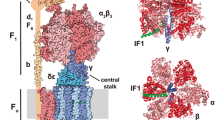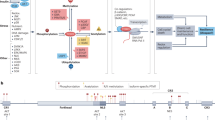Abstract
FOXO transcription factors are evolutionally conserved regulators of organismal life span downstream of insulin signaling. After integrating cellular signals from various stimuli such as growth factors, oxidative stress, and energy deprivation, FOXO factors induce expression of a specific set of genes that regulate various cellular processes to maintain homeostasis at a cellular or organismal level. In this review, we discuss roles of FOXO proteins in the maintenance of mitochondria, organelles critical for cellular quality control. FOXO factors protect mitochondria by activating mitochondrial antioxidant enzymes and they help remodel damaged mitochondria by inducing remodeling processes such as mitophagy. Furthermore, we also review the recently identified FOXO-dependent retrograde signaling from stressed mitochondria to the nucleus, which suggest that FOXO mediates the crosstalk between these two important organelles to maintain cell homeostasis. In addition, we introduce a mitohormetic role of gamitrinib-triphenylphosphonium (G-TPP), a mitochondrial heat shock protein (Hsp) inhibitor that can induce mild mitochondrial stress to protect cells from future insults in a FOXO-dependent manner.

Similar content being viewed by others
References
Arnould T, Michel S, Renard P (2015) Mitochondria retrograde signaling and the UPR mt: where are we in mammals? Int J Mol Sci 16:18224–18251. doi:10.3390/ijms160818224
Biggs WH 3rd, Meisenhelder J, Hunter T, Cavenee WK, Arden KC (1999) Protein kinase B/Akt-mediated phosphorylation promotes nuclear exclusion of the winged helix transcription factor FKHR1. Proc Natl Acad Sci U S A 96:7421–7426
Biswas G et al (1999) Retrograde Ca2+ signaling in C2C12 skeletal myocytes in response to mitochondrial genetic and metabolic stress: a novel mode of inter-organelle crosstalk. EMBO J 18:522–533. doi:10.1093/emboj/18.3.522
Brunet A et al (1999) Akt promotes cell survival by phosphorylating and inhibiting a Forkhead transcription factor. Cell 96:857–868
Brunet A, Park J, Tran H, Hu LS, Hemmings BA, Greenberg ME (2001) Protein kinase SGK mediates survival signals by phosphorylating the forkhead transcription factor FKHRL1 (FOXO3a). Mol Cell Biol 21:952–965. doi:10.1128/MCB.21.3.952-965.2001
Brunet A et al (2002) 14-3-3 transits to the nucleus and participates in dynamic nucleocytoplasmic transport. J Cell Biol 156:817–828. doi:10.1083/jcb.200112059
Brunet A et al (2004) Stress-dependent regulation of FOXO transcription factors by the SIRT1 deacetylase. Science 303:2011–2015. doi:10.1126/science.1094637
Calnan DR, Brunet A (2008) The FoxO code Oncogene 27:2276–2288. doi:10.1038/onc.2008.21
Chiribau CB, Cheng L, Cucoranu IC, Yu YS, Clempus RE, Sorescu D (2008) FOXO3A regulates peroxiredoxin III expression in human cardiac fibroblasts. J Biol Chem 283:8211–8217. doi:10.1074/jbc.M710610200
Clark IE et al (2006) Drosophila pink1 is required for mitochondrial function and interacts genetically with parkin. Nature 441:1162–1166. doi:10.1038/nature04779
Daitoku H et al (2004) Silent information regulator 2 potentiates Foxo1-mediated transcription through its deacetylase activity. Proc Natl Acad Sci U S A 101:10042–10047. doi:10.1073/pnas.0400593101
Dijkers PF, Medema RH, Lammers JW, Koenderman L, Coffer PJ (2000) Expression of the pro-apoptotic Bcl-2 family member Bim is regulated by the forkhead transcription factor FKHR-L1. Curr Biol 10:1201–1204
Epstein CB et al (2001) Genome-wide responses to mitochondrial dysfunction. Mol Biol Cell 12:297–308
Felts SJ, Owen BA, Nguyen P, Trepel J, Donner DB, Toft DO (2000) The hsp90-related protein TRAP1 is a mitochondrial protein with distinct functional properties. J Biol Chem 275:3305–3312
Ferber EC, Peck B, Delpuech O, Bell GP, East P, Schulze A (2012) FOXO3a regulates reactive oxygen metabolism by inhibiting mitochondrial gene expression. Cell Death Differ 19:968–979. doi:10.1038/cdd.2011.179
Greer EL, Oskoui PR, Banko MR, Maniar JM, Gygi MP, Gygi SP, Brunet A (2007) The energy sensor AMP-activated protein kinase directly regulates the mammalian FOXO3 transcription factor. J Biol Chem 282:30107–30119. doi:10.1074/jbc.M705325200
Hall RK, Yamasaki T, Kucera T, Waltner-Law M, O'Brien R, Granner DK (2000) Regulation of phosphoenolpyruvate carboxykinase and insulin-like growth factor-binding protein-1 gene expression by insulin. The role of winged helix/forkhead proteins J Biol Chem 275:30169–30175. doi:10.1074/jbc.M004898200
Hanna RA, Quinsay MN, Orogo AM, Giang K, Rikka S, Gustafsson AB (2012) Microtubule-associated protein 1 light chain 3 (LC3) interacts with Bnip3 protein to selectively remove endoplasmic reticulum and mitochondria via autophagy. J Biol Chem 287:19094–19104. doi:10.1074/jbc.M111.322933
Heddi A, Stepien G, Benke PJ, Wallace DC (1999) Coordinate induction of energy gene expression in tissues of mitochondrial disease patients. J Biol Chem 274:22968–22976
Horibe T, Hoogenraad NJ (2007) The chop gene contains an element for the positive regulation of the mitochondrial unfolded protein response. PLoS One 2:e835. doi:10.1371/journal.pone.0000835
van der Horst A, Tertoolen LG, de Vries-Smits LM, Frye RA, Medema RH, Burgering BM (2004) FOXO4 is acetylated upon peroxide stress and deacetylated by the longevity protein hSir2(SIRT1). J Biol Chem 279:28873–28879. doi:10.1074/jbc.M401138200
Hu MC et al (2004) IkappaB kinase promotes tumorigenesis through inhibition of forkhead FOXO3a. Cell 117:225–237
Huang H, Regan KM, Wang F, Wang D, Smith DI, van Deursen JM, Tindall DJ (2005) Skp2 inhibits FOXO1 in tumor suppression through ubiquitin-mediated degradation. Proc Natl Acad Sci U S A 102:1649–1654. doi:10.1073/pnas.0406789102
Jovaisaite V, Auwerx J (2015) The mitochondrial unfolded protein response-synchronizing genomes. Curr Opin Cell Biol 33:74–81. doi:10.1016/j.ceb.2014.12.003
Kang BH, Plescia J, Dohi T, Rosa J, Doxsey SJ, Altieri DC (2007) Regulation of tumor cell mitochondrial homeostasis by an organelle-specific Hsp90 chaperone network. Cell 131:257–270. doi:10.1016/j.cell.2007.08.028
Kang BH et al (2009) Combinatorial drug design targeting multiple cancer signaling networks controlled by mitochondrial Hsp90. J Clin Invest 119:454–464. doi:10.1172/JCI37613
Kim H et al (2016) Tumor necrosis factor receptor-associated protein 1 (TRAP1) mutation and TRAP1 inhibitor Gamitrinib-triphenylphosphonium (G-TPP) induce a Forkhead box O (FOXO)-dependent cell protective signal from mitochondria. J Biol Chem 291:1841–1853. doi:10.1074/jbc.M115.656934
Koh H, Chung J (2012) PINK1 as a molecular checkpoint in the maintenance of mitochondrial function and integrity. Mol Cells 34:7–13. doi:10.1007/s10059-012-0100-8
Koh H, Kim H, Kim MJ, Park J, Lee HJ, Chung J (2012) Silent information regulator 2 (Sir2) and Forkhead box O (FOXO) complement mitochondrial dysfunction and dopaminergic neuron loss in Drosophila PTEN-induced kinase 1 (PINK1) null mutant. J Biol Chem 287:12750–12758. doi:10.1074/jbc.M111.337907
Kops GJ, de Ruiter ND, De Vries-Smits AM, Powell DR, Bos JL, Burgering BM (1999) Direct control of the Forkhead transcription factor AFX by protein kinase B. Nature 398:630–634. doi:10.1038/19328
Kops GJ et al (2002) Forkhead transcription factor FOXO3a protects quiescent cells from oxidative stress. Nature 419:316–321. doi:10.1038/nature01036
Kume S et al (2010) Calorie restriction enhances cell adaptation to hypoxia through Sirt1-dependent mitochondrial autophagy in mouse aged kidney. J Clin Invest 120:1043–1055. doi:10.1172/JCI41376
Lee SJ, Hwang AB, Kenyon C (2010) Inhibition of respiration extends C. elegans life span via reactive oxygen species that increase HIF-1 activity. Curr Biol 20:2131–2136. doi:10.1016/j.cub.2010.10.057
Lehtinen MK et al (2006) A conserved MST-FOXO signaling pathway mediates oxidative-stress responses and extends life span. Cell 125:987–1001. doi:10.1016/j.cell.2006.03.046
Lin K, Dorman JB, Rodan A, Kenyon C (1997) Daf-16: an HNF-3/forkhead family member that can function to double the life-span of Caenorhabditis elegans. Science 278:1319–1322
Lisanti S et al (2014) Deletion of the mitochondrial chaperone TRAP-1 uncovers global reprogramming of metabolic networks. Cell Rep 8:671–677. doi:10.1016/j.celrep.2014.06.061
Medema RH, Kops GJ, Bos JL, Burgering BM (2000) AFX-like Forkhead transcription factors mediate cell-cycle regulation by Ras and PKB through p27kip1. Nature 404:782–787. doi:10.1038/35008115
Mei Y, Zhang Y, Yamamoto K, Xie W, Mak TW, You H (2009) FOXO3a-dependent regulation of Pink1 (Park6) mediates survival signaling in response to cytokine deprivation. Proc Natl Acad Sci U S A 106:5153–5158. doi:10.1073/pnas.0901104106
Mouchiroud L et al (2013) The NAD(+)/Sirtuin pathway modulates longevity through activation of mitochondrial UPR and FOXO signaling. Cell 154:430–441. doi:10.1016/j.cell.2013.06.016
Nemoto S, Finkel T (2002) Redox regulation of forkhead proteins through a p66shc-dependent signaling pathway. Science 295:2450–2452. doi:10.1126/science.1069004
Ney PA (2015) Mitochondrial autophagy: origins, significance, and role of BNIP3 and NIX. Biochim Biophys Acta 1853:2775–2783. doi:10.1016/j.bbamcr.2015.02.022
Ogg S, Paradis S, Gottlieb S, Patterson GI, Lee L, Tissenbaum HA, Ruvkun G (1997) The fork head transcription factor DAF-16 transduces insulin-like metabolic and longevity signals in C. elegans. Nature 389:994–999. doi:10.1038/40194
Olmos Y, Sanchez-Gomez FJ, Wild B, Garcia-Quintans N, Cabezudo S, Lamas S, Monsalve M (2013) SirT1 regulation of antioxidant genes is dependent on the formation of a FoxO3a/PGC-1alpha complex. Antioxid Redox Signal 19:1507–1521. doi:10.1089/ars.2012.4713
Owusu-Ansah E, Yavari A, Mandal S, Banerjee U (2008) Distinct mitochondrial retrograde signals control the G1-S cell cycle checkpoint. Nat Genet 40:356–361. doi:10.1038/ng.2007.50
Palikaras K, Lionaki E, Tavernarakis N (2015) Coordination of mitophagy and mitochondrial biogenesis during ageing in C. elegans. Nature 521:525–528. doi:10.1038/nature14300
Papa L, Germain D (2011) Estrogen receptor mediates a distinct mitochondrial unfolded protein response. J Cell Sci 124:1396–1402. doi:10.1242/jcs.078220
Papa L, Germain D (2014) SirT3 regulates the mitochondrial unfolded protein response. Mol Cell Biol 34:699–710. doi:10.1128/MCB.01337-13
Paradis S, Ruvkun G (1998) Caenorhabditis elegans Akt/PKB transduces insulin receptor-like signals from AGE-1 PI3 kinase to the DAF-16 transcription factor. Genes Dev 12:2488–2498
Park J et al (2006) Mitochondrial dysfunction in Drosophila PINK1 mutants is complemented by parkin. Nature 441:1157–1161. doi:10.1038/nature04788
Pickrell AM, Youle RJ (2015) The roles of PINK1, parkin, and mitochondrial fidelity in Parkinson's disease. Neuron 85:257–273. doi:10.1016/j.neuron.2014.12.007
Rothermel BA, Shyjan AW, Etheredge JL, Butow RA (1995) Transactivation by Rtg1p, a basic helix-loop-helix protein that functions in communication between mitochondria and the nucleus in yeast. J Biol Chem 270:29476–29482
Rothermel BA, Thornton JL, Butow RA (1997) Rtg3p, a basic helix-loop-helix/leucine zipper protein that functions in mitochondrial-induced changes in gene expression, contains independent activation domains. J Biol Chem 272:19801–19807
Schmoll D et al (2000) Regulation of glucose-6-phosphatase gene expression by protein kinase Balpha and the forkhead transcription factor FKHR. Evidence for insulin response unit-dependent and -independent effects of insulin on promoter activity J Biol Chem 275:36324–36333. doi:10.1074/jbc.M003616200
Sciacovelli M et al (2013) The mitochondrial chaperone TRAP1 promotes neoplastic growth by inhibiting succinate dehydrogenase. Cell Metab 17:988–999. doi:10.1016/j.cmet.2013.04.019
Sekito T, Thornton J, Butow RA (2000) Mitochondria-to-nuclear signaling is regulated by the subcellular localization of the transcription factors Rtg1p and Rtg3p. Mol Biol Cell 11:2103–2115
Seoane J, Le HV, Shen L, Anderson SA, Massague J (2004) Integration of Smad and forkhead pathways in the control of neuroepithelial and glioblastoma cell proliferation. Cell 117:211–223
Song HY, Dunbar JD, Zhang YX, Guo D, Donner DB (1995) Identification of a protein with homology to hsp90 that binds the type 1 tumor necrosis factor receptor. J Biol Chem 270:3574–3581
Sunayama J, Tsuruta F, Masuyama N, Gotoh Y (2005) JNK antagonizes Akt-mediated survival signals by phosphorylating 14-3-3. J Cell Biol 170:295–304. doi:10.1083/jcb.200409117
Tain LS, Mortiboys H, Tao RN, Ziviani E, Bandmann O, Whitworth AJ (2009) Rapamycin activation of 4E-BP prevents parkinsonian dopaminergic neuron loss. Nat Neurosci 12:1129–1135. doi:10.1038/nn.2372
Tran H et al (2002) DNA repair pathway stimulated by the forkhead transcription factor FOXO3a through the Gadd45 protein. Science 296:530–534. doi:10.1126/science.1068712
Valente EM et al (2004) Hereditary early-onset Parkinson's disease caused by mutations in PINK1. Science 304:1158–1160. doi:10.1126/science.1096284
Wang K, Long B, Jiao JQ, Wang JX, Liu JP, Li Q, Li PF (2012) miR-484 regulates mitochondrial network through targeting Fis1. Nat Commun 3:781. doi:10.1038/ncomms1770
Webb AE, Brunet A (2014) FOXO transcription factors: key regulators of cellular quality control. Trends Biochem Sci 39:159–169. doi:10.1016/j.tibs.2014.02.003
Yamagata K et al (2008) Arginine methylation of FOXO transcription factors inhibits their phosphorylation by Akt. Mol Cell 32:221–231. doi:10.1016/j.molcel.2008.09.013
Yang W, Hekimi S (2010) A mitochondrial superoxide signal triggers increased longevity in Caenorhabditis elegans. PLoS Biol 8:e1000556. doi:10.1371/journal.pbio.1000556
Yoshida S et al (2013) Molecular chaperone TRAP1 regulates a metabolic switch between mitochondrial respiration and aerobic glycolysis. Proc Natl Acad Sci U S A 110:E1604–E1612. doi:10.1073/pnas.1220659110
Yun J, Finkel T (2014) Mitohormesis. Cell Metab 19:757–766. doi:10.1016/j.cmet.2014.01.011
Yun H et al (2014) AMP-activated protein kinase mediates the antioxidant effects of resveratrol through regulation of the transcription factor FoxO1. FEBS J 281:4421–4438. doi:10.1111/febs.12949
Zhu Y et al (2013) Modulation of serines 17 and 24 in the LC3-interacting region of Bnip3 determines pro-survival mitophagy versus apoptosis. J Biol Chem 288:1099–1113. doi:10.1074/jbc.M112.399345
Acknowledgements
This work was supported by the National Research Foundation of Korea (NRF) grants (NRF-2012R1A1A1012482, NRF-2016R1D1A1B03932754, NRF-2016R1A5A2007009) funded by the Ministry of Science, ICT and Future Planning (MSIP), Republic of Korea.
Author information
Authors and Affiliations
Corresponding author
Rights and permissions
About this article
Cite this article
Kim, S., Koh, H. Role of FOXO transcription factors in crosstalk between mitochondria and the nucleus. J Bioenerg Biomembr 49, 335–341 (2017). https://doi.org/10.1007/s10863-017-9705-0
Published:
Issue Date:
DOI: https://doi.org/10.1007/s10863-017-9705-0




